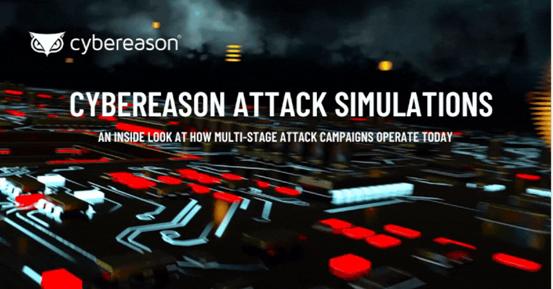Agari Report: New BEC scam 7X more costly than average, bigger phish start angling in

Sophisticated threat actors, evolving phishing tactics, and a $800,000 business email compromise (BEC) scam in the second half of 2020 all signal trouble ahead, according to analysis from the Agari Cyber Intelligence Division (ACID). After attacks on Magellan Health, GoDaddy, and the SolarWinds “hack of the decade,” one thing is distressingly clear. Phishing, BEC, and […]
5 Minutes With… Veriato’s Chris Gilkes

In the latest instalment of our IT security industry executive interview series we spoke to Chris Gilkes (pictured), Director EMEA at Veriato, about the company and its solutions, key challenges posed by a remote workforce, the importance of innovation and why you should never stop listening to customers… Tell us about your company, products and […]
Security IT Summit: Registration now open for June 2021

The Security IT Summit is a unique event that has been created to help you build business connections with the latest innovative and budget-saving suppliers in the industry. Date & Venue: 29th June – Hilton London Canary Wharf You can attend this one-day event entirely for FREE.BOOK YOUR PLACE HERE (Virtual attendance options are available) What does your free […]
WEBINAR REWIND: Ransomware Attack Simulation

In a special attack simulation, this Cybereason webinar looked at how multi-stage attack campaigns operate today – and you can now watch the entire session again online. Presented by Cybereason Product Director Eric Sun, the webinar enables the audience to witness an attacker’s infiltration and watch the malicious operation as it moves across the entire […]
WEBINAR REWIND: Managing The Compliance & Security Nightmares Caused By A Remote Workforce

Don’t worry if you missed last week’s brilliant webinar from Veriato – You can now watch the entire session again online! In an in-depth and wide ranging talk, Veriato’s Director of EMEA Sales Director Chris Gilkes takes us through how your organisation can maintain compliance while employees are working remotely. Why is this important? Put […]
Do you specialise in Phishing Detection? We want to hear from you!

Each month on IT Security Briefing we’re shining the spotlight on a different part of the cyber security market – and in April we’re focussing on Phishing Detection solutions. It’s all part of our ‘Recommended’ editorial feature, designed to help IT security buyers find the best products and services available today. So, if you’re a Phishing Detection solutions […]
Join us at the Security IT Summit this June

The next Security IT Summit, which will take place in London this June – both live and virtual attendance options will be available! 29th June – Hilton London Canary Wharf – Booking form (flexible attendance options) Benefits of attending include: Receive a bespoke itinerary of relaxed, 1-2-1 meetings with innovative and budget savings suppliers who you would […]
How AI stopped a WastedLocker intrusion before ransomware deployed

By Max Heinemeyer, Director of Threat Hunting, Darktrace Since first being discovered in May 2020, WastedLocker has made quite a name for itself, quickly becoming an issue for businesses and cyber security firms around the world. WastedLocker is known for its sophisticated methods of obfuscation and steep ransom demands. Its use of ‘living off the […]
SAVE THE DATE: Security IT Summit – Summer 2021

Join us at the next Security IT Summit, which will take place in London this June – both live and virtual attendance options will be available! 29th June – Hilton London Canary Wharf – Booking form (flexible attendance options) Benefits of attending include: Receive a bespoke itinerary of relaxed, 1-2-1 meetings with innovative and budget savings suppliers […]
Do you specialise in Intrusion Detection & Prevention? We want to hear from you!

Each month on IT Security Briefing we’re shining the spotlight on a different part of the cyber security market – and in March we’re focussing on Intrusion Detection & Prevention solutions. It’s all part of our ‘Recommended’ editorial feature, designed to help IT security buyers find the best products and services available today. So, if you’re an Intrusion […]


